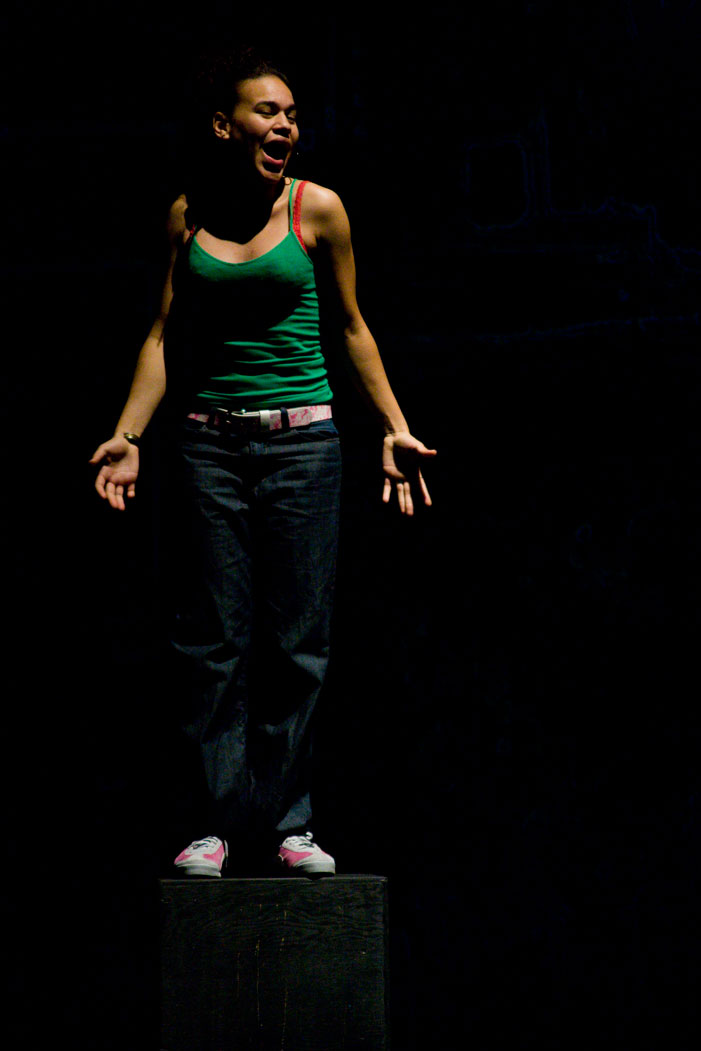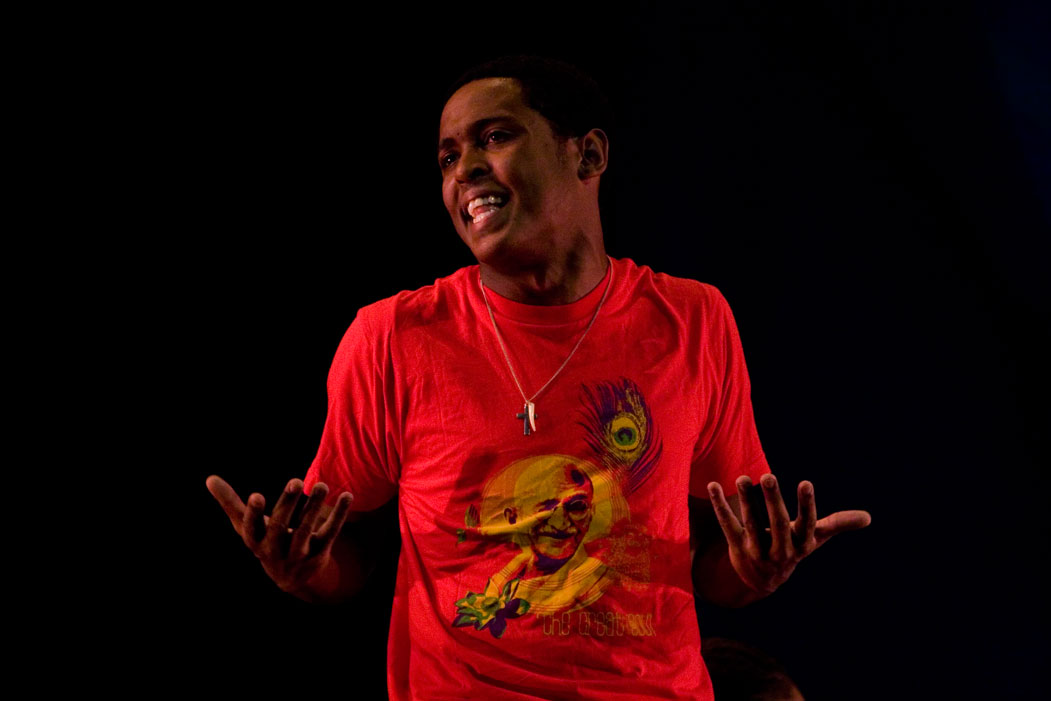 |
|

| The Violent Femmes |
| Ivory |
| We Want the Funk |
| Worth the Wait |
| Voices of Change |
| Voices of Change: Wisconsin's Spoken Word Movement Makes Waves | ||||||||||||||||
| Continued... | ||||||||||||||||
Kelsey Van Ert is one of 15 students who make up the first college program in the nation to fuse together arts, community leadership and academic excellence. Through their voices they are catalyzing social change, community empowerment, education and cross-cultural experiences. The First Wave Spoken Word & Urban Arts Learning Community brings together community leaders from all over the country who excel as poets, DJs, singers, dancers, actors and visual artists. “We are trying to create great academic artistic and community leaders that can go on to influence their own communities and the society in general in a positive way,” said Willie Ney, director of the UW Office of Multicultural Arts Initiatives and creator of First Wave. This program engages 15 freshmen in college life, the arts and the Madison community. “I never thought something like this would be possible—[to] go to school because you are good at hip-hop," Van Ert said.
The students take one class together each semester, in addition to their normal college classes, and live in the same building freshman year. In addition to learning how to improve their skills, they are also required to take a service learning class. Josh Healey, First Wave program director, explained that the program tries to teach these students to appreciate more than the art itself. “It’s not art for art’s sake. It’s using your art, using your voice for social change, community empowerment, education and cross-cultural experiences.” Being an excellent artist will not catapult just anyone to the top of the list in this program. Healey said the program is not that easy to get into. “Even if you are a great student and a great artist, but you are just doing it for yourself and trying to get awards and prizes, that’s not what we are interested in,” Healey said. “We want students who are leaders in schools and in communities.” “We are trying to help change the culture of the campus,” Healey said, “[and] make it a campus that’s much more inviting and exciting to kids, students and the 21st century.” The First Wave scholars are working with high schools in the area to support this movement. “Having other kids witness the possibility of finding your voice is really powerful, and that in itself is great contribution to community building,” Ney said. “Nothing is prefabricated, so the ways the First Wave youth take this is going to be interesting in terms of community work, partnership development and programming.” The Word
Lines about racism, beauty, alcohol, individuality and death travel from youth’s brains to the paper, from their mouths to the mic; and they have named their efforts Spoken Word. “Youths around the world use the poetry and the art to talk about issues that are important to them,” Ney said. “They are talking about issues of victimization, abuse, drama. It's almost like a catharsis, a healing. They use it as a form to get it out of their system instead of looking for vengeance and violence.” Spoken Word is not a young art. It can be traced back to Homeric epics, African storytellers and even Shakespeare, all examples of poetry performed out loud. In the United States, however, Spoken Word was reinvented in the past century with the history of the blues and Harlem Renaissance in the 1920s and 1930s, according to Healey. Later in the 1990s, youth started picking up on this literary tradition and adding a new flavor with hip-hop. “Hip-hop is the most influential youth culture in the world,” Ney said. “It's a global culture; it’s a force for social change; it’s engaging students of color in other ways that other arts don’t do.” |
||||||||||||||||
About Us | Contact Us | Business Partners | Archives | Sitemap
Copyright 2007 Curb Magazine

